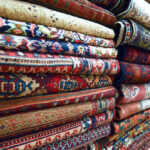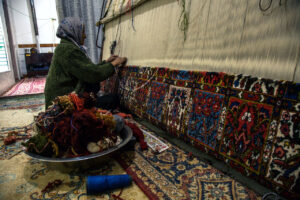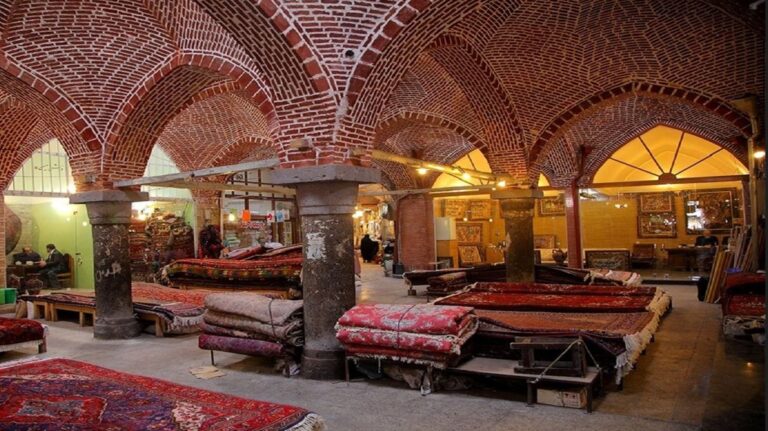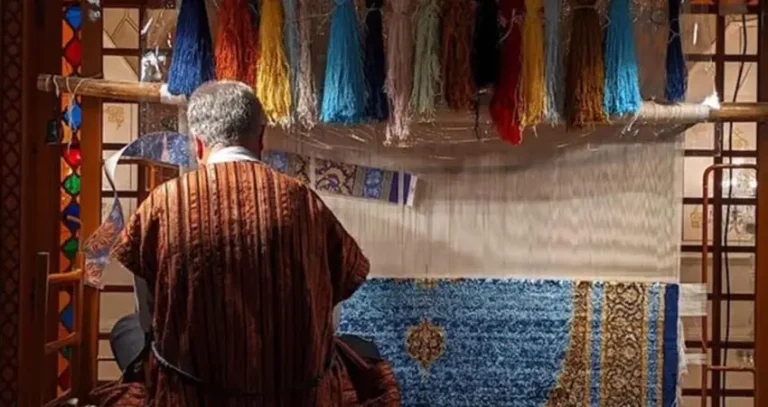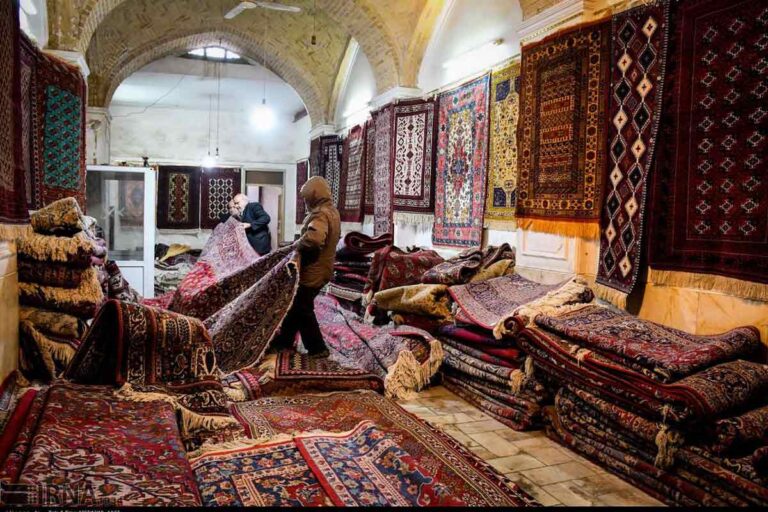The “Zir-e-Khaki” Motif: A Timeless Symbol in Persian Carpet Art
Gol-e Farang: A Floral Motif with European Roots in Persian Carpets
Persian carpet weaving is one of the most ancient and cherished art forms in Iranian culture. From the world’s oldest known carpet—the Pazyryk, believed to be of Persian origin—this tradition has never faded. Instead, it has evolved, captivating audiences across centuries and cultures.
Among the most celebrated Persian carpet designs is the “Shekargah” motif, or Hunting Scene, a narrative-rich pattern that has adorned handmade rugs since ancient times. Let’s explore what makes this design so timeless and culturally meaningful.
What Is the “Shekargah” or Hunting Scene Motif?
As the name suggests, the Hunting Scene motif portrays dynamic, stylized depictions of hunting expeditions. These rugs often feature:
-
Mounted or footed hunters
-
Wild animals like deer, gazelles, leopards, lions, and tigers
-
Birds in flight
-
Lush trees, flowers, and meadows, representing fertile landscapes
These images reflect the royal pastimes of Persian kings and nobility, who viewed hunting as a symbol of strength, power, and prestige. The result is a rich, storytelling carpet that blends nature, culture, and mythology.
Variants of the Shekargah Design
There are several subcategories of the hunting scene motif, including:
-
Tree-style hunting scenes
-
Medallion-based hunting scenes
-
All-over or continuous hunting field designs
-
“Gereftegir” motif, showing wild animal duels like lion vs. bull or tiger vs. leopard
These compositions often evoke the ancient gardens and sacred hunting grounds of early Persian empires, merging symbolic power with historical narrative.
Historical Origins of the Motif
The roots of the Shekargah design trace back to Achaemenid Persia, when expansive plains and sacred gardens served as imperial hunting grounds. These traditions were revived and refined during the Safavid dynasty, particularly under Shah Abbas the Great (16th century), when carpet art reached its golden age.
Notable historical examples of Shekargah rugs include:
-
The Hunting Carpet of Vienna (Museum of Applied Arts, Austria)
-
The Poldi Pezzoli Hunting Carpet (Milan, Italy)
-
The Ghiath al-Din Jami Hunting Carpet
These masterworks remain among the most valuable Persian carpets ever created.
Regional Interpretations of the Hunting Scene
Several major weaving centers have produced their own distinct versions of the Shekargah design. Notable examples include:
-
Tabriz: Known for highly detailed, dynamic compositions with exquisite knot density
-
Kashan: Delicate execution with refined floral hunting borders
-
Kashmar: Story-driven compositions that blend epic and mythological themes
-
Qom: High-silk content and luminous color palettes in religious and poetic settings
-
Bijar: Rugged, tribal interpretations with strong visual rhythm
-
Isfahan: Often blends Shekargah with central medallion and floral elegance
These regions continue to produce sought-after hunting-themed rugs that are prized by collectors and historians alike.
Cultural Significance of the Shekargah Motif
The hunting theme in Persian rugs has always been closely tied to cultural, religious, and political meanings of its time. During the Safavid era, for instance, Shekargah designs symbolized not only aristocratic leisure but also spiritual conquest and divine justice.
When woven into a Lachak-Toranj layout (corner-medallion design), the hunting motif often took center stage in royal courts, mosque interiors, and diplomatic gifts—affirming both Persian artistic identity and imperial grandeur.
Final Thought
The Shekargah motif is more than just a decorative scene—it’s a visual chronicle of Iranian heritage. Blending artistic finesse with cultural depth, it has become one of the most recognizable and enduring designs in the world of Persian carpets.
Whether as a museum piece or a cherished home centerpiece, rugs bearing the hunting scene tell a story of nobility, nature, and narrative art.
Do you own or admire a Shekargah rug?
Share your thoughts or photos—we’d love to hear how this timeless design resonates with you.



